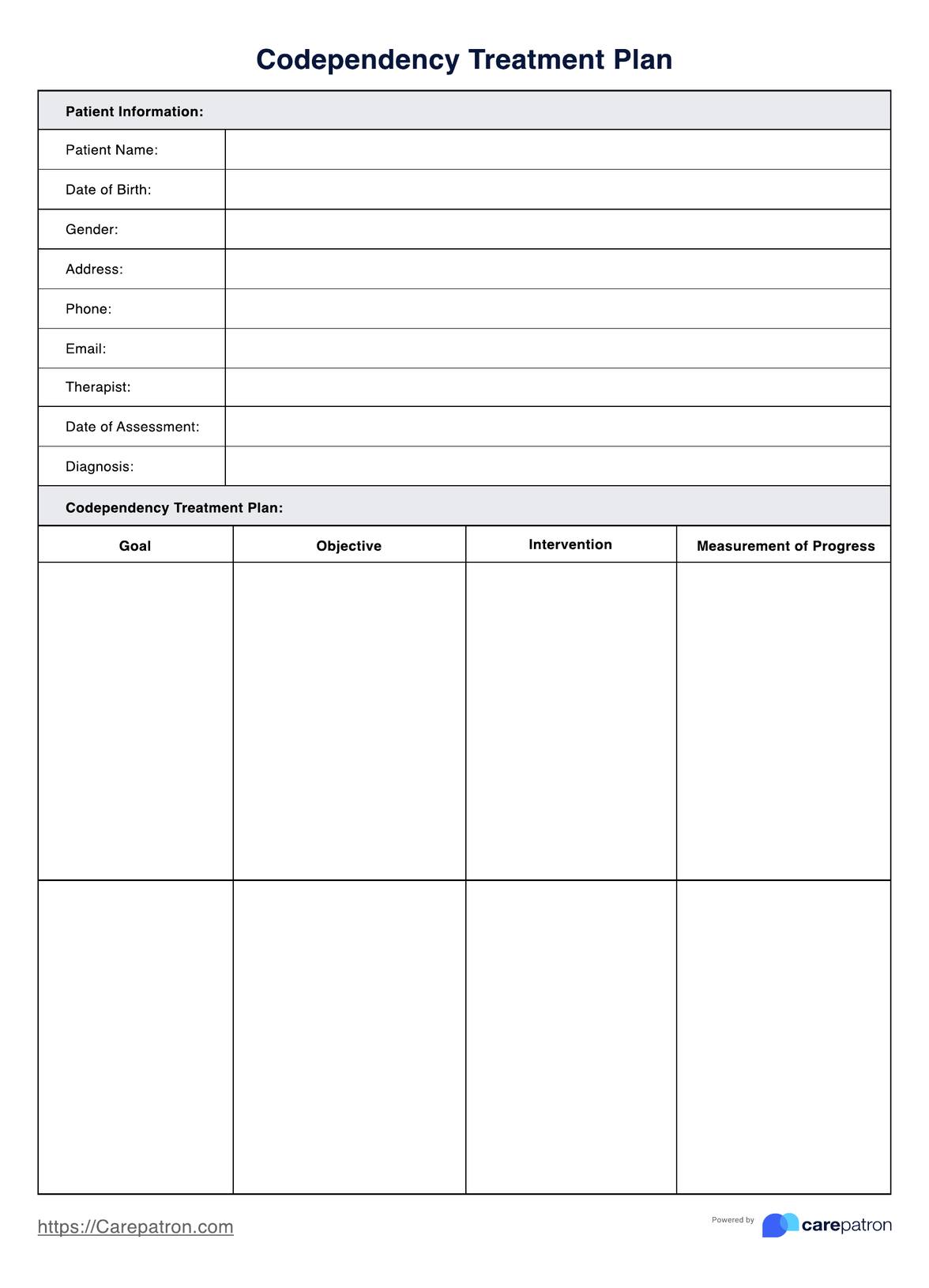A Codependency Treatment Plan should be used when a client presents with symptoms or patterns of codependency in their relationships. A comprehensive approach is needed to address these issues.

Codependency Treatment Plans
Discover the importance of a Codependency Treatment Plan and download a free, printable template with examples to help you create an effective treatment strategy.
Use Template
Codependency Treatment Plans Template
Commonly asked questions
To write a Codependency Treatment Plan, gather patient information, set clear goals, identify objectives, outline interventions, and establish methods to measure progress.
Codependency Treatment Plans are helpful because they provide a structured, goal-oriented approach to treating codependency, facilitate clear communication, track client progress, and enhance the therapeutic process.
EHR and practice management software
Get started for free
*No credit card required
Free
$0/usd
Unlimited clients
Telehealth
1GB of storage
Client portal text
Automated billing and online payments











